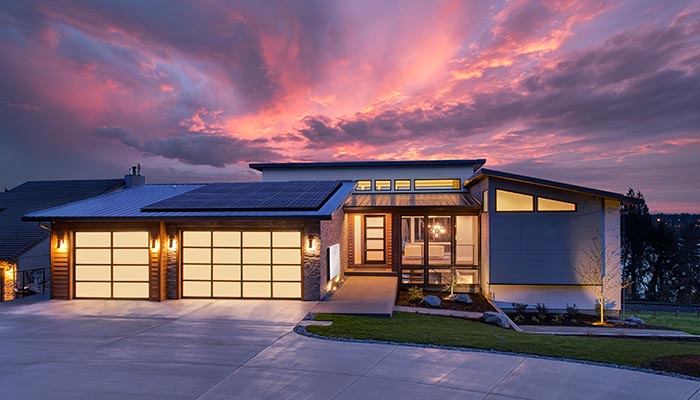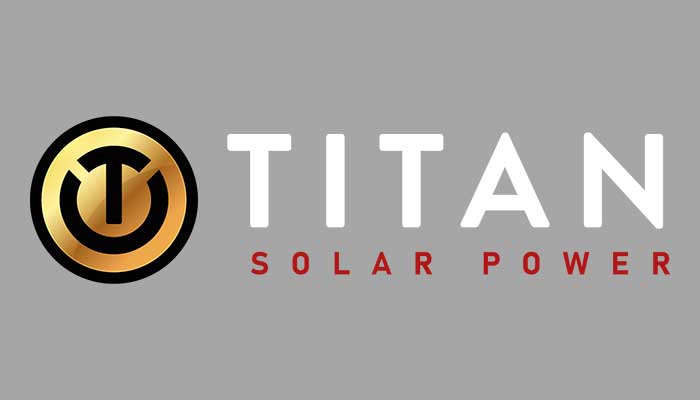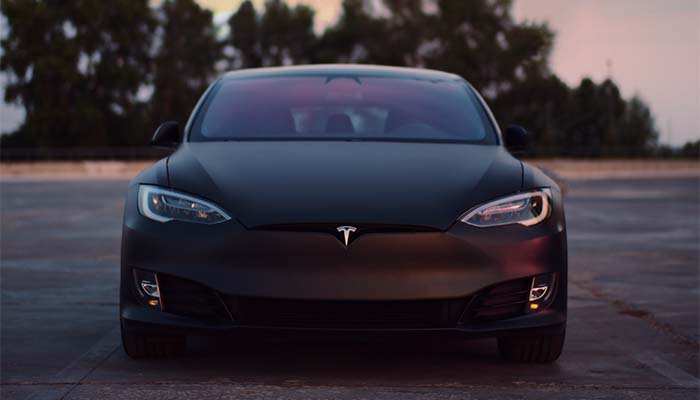
Updated February 12, 2022
Solar power systems are a clean, affordable way to power your home. But ultimately, they’re only as reliable as the panels themselves. So, how durable are solar panels in storms?
Solar panels are surprisingly reliable in storms. They can typically withstand winds of 140 MPH or even 160 MPH. They can even stand up to all but the most horrendous hail.
But that’s a short answer to a more involved question. Here, we’ll look at the threats that storms can pose to solar panels, and how those panels have performed historically. We’ll also talk about what you should do in the unlikely event that a storm does damage your panels.
Two Main Threats: Hail and Hurricanes
There are two primary weather-related threats to a solar panel array: hail and hurricanes. Ordinary thunderstorms pose no real threat. And while tornadoes will tear up solar panels, most people don’t seriously have to worry about that. So, how much risk are we talking about?
For that, we can turn to a 2015 study by the National Renewable Energy Laboratory (NREL). In the study, NREL scientists collected data from 50,000 US solar power systems that were installed between 2009 and 2013. In any given year, only 0.1% of solar systems were affected by damaged panels. Even if we include all kinds of hardware failures such as inverter damage, the study shows that fewer than 1% of systems per year had any kind of hardware problem.
In other words, solar systems rarely fail for any reason, and weather damage accounts for a minuscule number of system failures.
How Durable Are Solar Panels in a Hurricane?
Hurricanes pose a unique threat, because of the potential for sustained high winds. For this reason, most localities require solar panels to withstand 140 MPH winds. That said, some state and local governments have put higher standards in place. In most parts of Florida, for example, solar panels are required to withstand 160 MPH winds.
Over the past decade, we’ve had several opportunities to see how well these standards work. Let’s look at a few examples:
- In 2012, the Northeast was hit by Hurricane Sandy, the worst storm to strike the region in decades. New Jersey was one of the hardest-hit states, and had also been a leader in solar power installation. Surprisingly, the state reported a negligible amount of damage to solar panels during the storm.
- In 2017, Hurricane Maria crossed directly over Puerto Rico, causing severe damage to the island’s infrastructure. Two years earlier, in 2015, a 645kW rooftop solar system had been installed on the VA hospital in San Juan. This system continued operating at 100% capacity after the storm, despite having withstood 180 MPH winds. This was accomplished by installing flexible racking, so the panels could sway with the wind instead of blowing away.
- In 2018, Hurricane Florence landed in South Carolina. The storm was powerful enough to knock out the state’s coal power plants, leaving thousands of residents without power for almost two weeks. Meanwhile, the Palmetto State’s solar power stations were back online the next morning.
How Durable Are Solar Panels Against Hail?
Solar panels have been getting a lot harder to smash over the years. Modern panels are typically designed to withstand one-inch hailstones falling at 50 MPH. That’s about the size of a ping-pong ball, so we’re talking about a significant hailstorm.
In May 2017, NREL had the opportunity to experience this firsthand, when a major hailstorm hit the Denver metropolitan area. Car windows were smashed and roofs were dented. But of the 3,000 panels in NREL’s array, only a single one was damaged. This panel seemed to have been hit several times in the same location, which caused some cracking in the surface glass. So it’s safe to say that your home solar array can withstand all but the most apocalyptic hailstorms.
How Should I Prepare My Solar System for a Storm?
Let’s say there’s a major storm coming to your area. How should you prepare?
In most cases, you won’t have to do anything at all. Provided your panels were properly installed, they should be weatherproof for several decades, regardless of the weather. You could actually make things worse by trying to remove the panels or cover them up.
One common myth is that high winds can catch your solar panels like sails, and rip the roof off of your house. This is simply not the case – unless there’s a tornado bearing down on you, which would rip your roof off anyway.
There is a small grain of truth to this myth, though. Mobile home roofs can be ripped off by solar panels in high winds, which is why providers won’t install panels on mobile homes.
Does My Homeowners’ Insurance Cover Solar Panel Damage?
So, what happens in the unlikely event that your solar panels are damaged? In that case, you’re most likely covered. Most homeowners’ insurers consider solar panels a part of the house, and they’re covered like any other part of the house.
That said, you still want to take some precautions. Snap some photos of your solar system, and save all your receipts so you can establish the value of any damaged panels. You’ll also want to check your insurance coverage limits and raise them if necessary to account for the panels.
Remember, damage doesn’t always come from the weather! If your house burns down, your solar panels will go down with it, so it’s a good idea to have plenty of coverage.
If you’re leasing your solar panels, things are a little bit different. Since you don’t own them, you won’t be able to claim them on your homeowners’ insurance. Then again, most solar providers have robust warranty coverage, along with insurance to cover any losses. Check your lease to find out the details of your situation.
What Do I Do if My Panels Are Damaged?
In the unlikely event that your solar panels are damaged – due to weather or any other reason – keep clear of the area. There are high-voltage wires involved, and some of them may have come loose. Your solar system should automatically shut down power if there’s damage, but you don’t want to risk it.
Instead, call your solar provider or installer. If your panel is under warranty, they might even replace it for free. If it’s no longer under warranty, you may need to hire a qualified electrician to do the job. In either case, your utility company will probably want to inspect your system before it’s reconnected to the grid.
Conclusion
Modern solar power systems are incredibly robust, and most of them will withstand even the worst storms. Winds up to 160 MPH and large hailstones rarely cause damage, since solar panels are engineered to withstand them. And if your panels do get damaged, they’ll be covered by your homeowners’ insurance.



